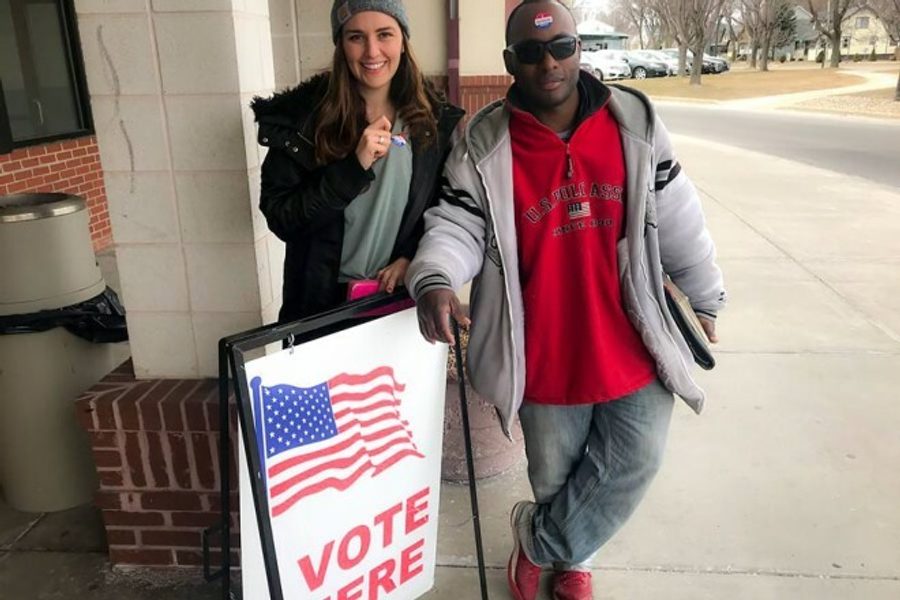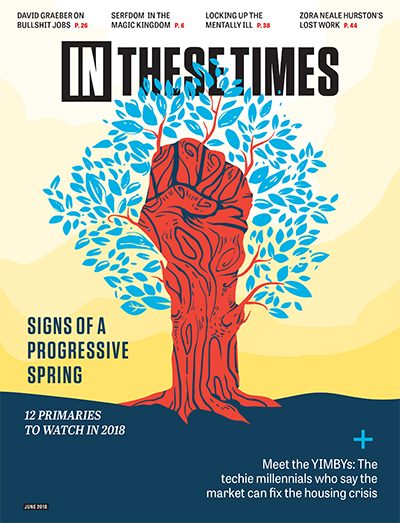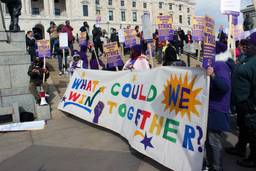How a Wave of New Voters Could Take Out Scott Walker in 2018
Thanks to increased voter registration efforts, Democrats may be able to oust Wisconsin Governor Scott Walker this fall.
Michael Leon

MADISON, WIS. — Voters stream into the Meadowridge Library, a typical polling place on the southwest side. It’s election day, April 3, icy and miserable. Seven years ago, Wisconsin Gov. Scott Walker ® launched a wide-ranging project impeding turnout, instituting voter ID requirements and closing earlyvoting sites, all of which helped his own party.
But Walker’s success is beginning to thaw. Citywide turnout reached 45 percent this spring, high for an April election.
That’s thanks in part to a nonpartisan counteroffensive led by election clerks in metro voting districts.
In an email to In These Times, Madison city clerk Maribeth Witzel-Behl said, “Our goal is for each eligible voter to be able to cast a ballot and have that ballot counted.” The effect will likely be a spike in turnout for the August primaries and November general elections.
Madison’s pioneering voter outreach effort began in 2012, after state Republicans passed the first of dozens of voter suppression laws. Designated “ambassadors” from the City Clerk’s office train voting rights workers for groups such as the Dane County Voter ID Coalition who reach out to seniors, students and civil rights groups.
“We go to where we think voting rights may be at risk — food pantries, college campuses, homeless shelters — to register voters and help them get an ID, including taking them to the DMV,” says Marian Matthews of the League of Women Voters of Dane County. “I feel strongly about social justice and I think voting rights are critical to achieving it.”
Madison has seen high turnouts since 2016, when the One Wisconsin Institute v. Thomsen federal court decision swept away much of the Republican voter-obstruction legislation, including the mandate that cities have only one early voting site. The ruling applied statewide, but Madison has done the most to expand voter outreach, increasing early-voting sites to a state-record 15 stations.
“It appears that all of this proactivity paid off,” notes Barry Burden, political science professor at the University of Wisconsin-Madison. In November 2016, Madison saw high voter participation while overall state turnout declined. This April, Madison’s turnout roughly doubled that of the state at large, helping to propel progressive Rebecca Dallet to a landslide victory in the Wisconsin Supreme Court race.
Other Wisconsin municipalities contacted the Madison Clerk’s Office to use the city as a model. Kenosha,the state’s fourth-most populous city, adopted a similar voter ambassador project in 2017 and recorded a 26 percent turnout in April, almost doubling the April 2017 turnout.
Milwaukee is opening 20 voter registration kiosks at public libraries across the city, and will increase its early-voting sites from three to eight for the general election.
Universities have also joined in. At the University of Wisconsin-Madison, the Andrew Goodman Foundation — named for an activist murdered in 1964 while helping black Mississippians register to vote — has funded three “Vote Everywhere Ambassadors” since 2016. Several campus wards saw record turnout in April.
Private groups have chipped in, too, such as a local taxi cooperative, Union Cab, which drove people to the polls for free.
In November, Madison, which votes more than 80 percent Democratic, could potentially increase the anti-Walker vote by tens of thousands over the 2014 election. Near-presidential-level turnout could signal the end of the Republicans’ voter obstruction project.





